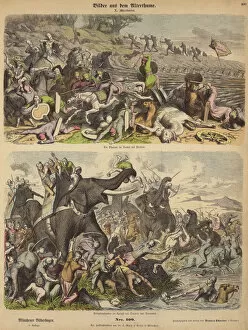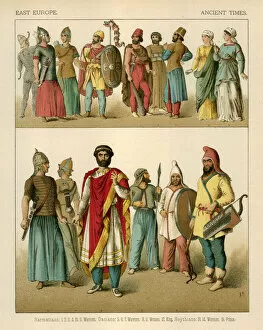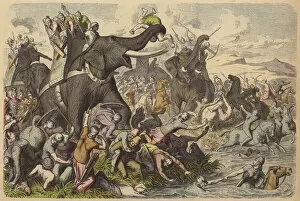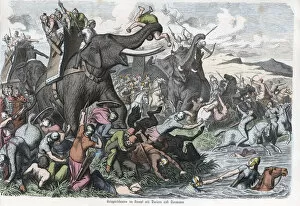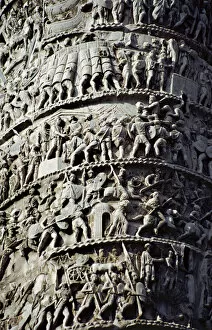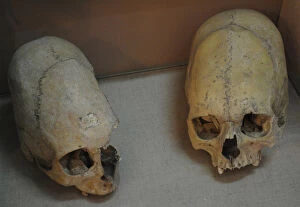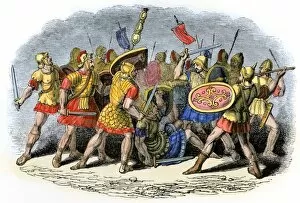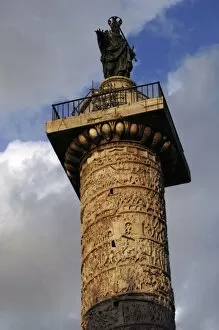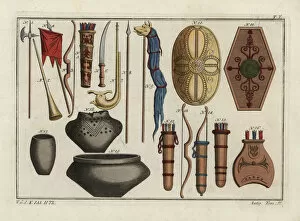Sarmatians Collection
The Sarmatians, a fierce and enigmatic ancient people, left their mark on history through various depictions found in art and artifacts
For sale as Licensed Images
Choose your image, Select your licence and Download the media
The Sarmatians, a fierce and enigmatic ancient people, left their mark on history through various depictions found in art and artifacts. The Column of Marcus Aurelius in Rome provides a glimpse into the battles fought between Roman legions and these formidable warriors during the 2nd century AD. Detailed carvings on the column showcase scenes of Macedonians engaging in combat with war elephants against both Dacians and Sarmatians. East European costume is depicted in colored engravings from that era, showcasing the unique attire worn by the Sarmatians. However, it is not just their clothing that sets them apart; deformed human skulls have been discovered, possibly dating back to the 3rd century, suggesting distinctive cultural practices or rituals among this ancient civilization. Weapons used by various peoples of antiquity are also showcased alongside representations of battles involving Greeks fighting alongside elephants against Dacians and Sarmatians. These illustrations provide insight into military strategies employed during those times. The significance of these historical depictions lies not only in understanding warfare tactics but also in unraveling the complex interactions between different civilizations. The clash between Roman legions and Sarmatian warriors highlights how cultures collided as they vied for power and dominance. Today, remnants of this fascinating past can still be seen at Piazza Colonna in Rome where the Column of Marcus Aurelius stands tall as a testament to these encounters. It serves as a reminder that history is not merely confined to textbooks but lives on through tangible relics that tell stories waiting to be discovered by curious minds seeking knowledge about our shared human heritage.

